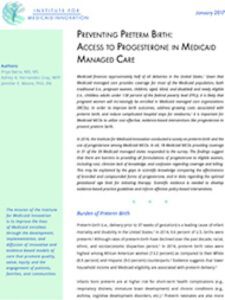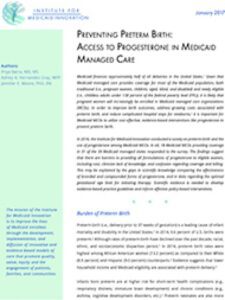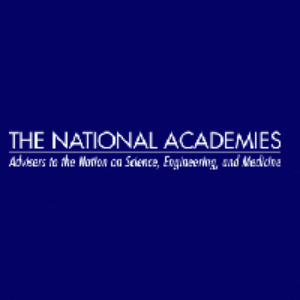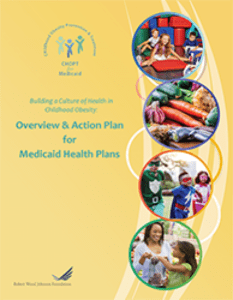Month:
Jennifer E. Moore, PhD, RN, FAAN
The Institute for Medicaid Innovation in collaboration with the Kaiser Family Foundation sought to better understand the provision of women’s reproductive health services in Medicaid with an emphasis on gleaning information about access and coverage.
Read MoreWe sometimes view oral health as simply that of good dental care. Yet it goes beyond maintaining the hard enamel structure of teeth, a structure so impervious that remaining dentition can often times be used as a tool for identification when all other human structures have decomposed.
Read MoreMedicaid finances approximately half of all deliveries in the United States. A recent analysis conducted by A. R. Markus et. al. (2016) found that Medicaid covered approximately 48.8 percent of all preterm births (compared to 42.1 percent covered private insurance) from 2010-2013 and that Medicaid was 7.5 percent more likely to be the source of coverage for a preterm birth than private insurance. It is worth noting that this analysis did not stratify by delivery system (e.g., fee-for-service or managed care).
Read MorePreterm birth – delivery before 37 weeks of pregnancy – affects almost one in ten births and is the leading cause of neonatal morbidity and mortality in the United States. Babies born preterm account for almost $20 billion in health care costs annually, both for acute care (after birth) and long-term care needs throughout childhood.
Read MoreJennifer E. Moore, PhD, RN, FAAN
The National Academies of Sciences, Engineering, and Medicine (NASEM), formerly the Institute of Medicine, recently convened its first Committee on Ensuring Patient Access to Affordable Drug Therapies. The committee is charged with developing a final report that identifies issues in drug pricing and recommendations for that could potentially alleviates these issues if implemented.
Read MoreChildhood obesity is one of the most common and significant health conditions in the U.S. and yet, is the least understood. Current research demonstrates an overall lack of evidence to assess the efficacy of non-school based interventions in preventing childhood…
Read MoreJennifer E. Moore, PhD, RN, FAAN
Challenges in assuring access to long acting reversible contraception (LARC) for the Medicaid population are numerous, including limitations associated with a bundled maternity care payment system. However, there are also innovative initiatives being tested in Medicaid managed care to overcome these barriers.
Read MoreJennifer E. Moore, PhD, RN, FAAN
Funded by the Robert Wood Johnson Foundation, the CHOPT for Medicaid project is a year-long initiative focused on childhood obesity prevention and treatment efforts in the Medicaid population. The culmination of this work was unveiled during last week’s convening meeting, including a toolkit that offers a comprehensive overview of the state-of-the science
Read MoreJennifer E. Moore, PhD, RN, FAAN
Let me be the first to officially welcome you to the launch of the Institute for Medicaid Innovation’s blog.
We are excited to use this platform to keep Medicaid stakeholders informed about current and upcoming initiatives that the Institute is leading. We will feature interviews from Medicaid beneficiaries, health plans, researchers, clinicians, and advocacy organizations that capture best practices and the salient issues facing this population.
Read More- « Previous
- 1
- …
- 7
- 8
- 9






